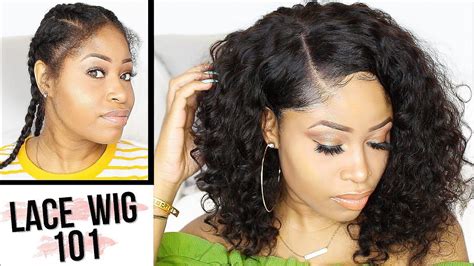Introduction

Breast cancer is a challenging journey that often involves hair loss due to chemotherapy treatments. Wigs provide a solution to maintain a sense of normalcy and confidence during this time. This comprehensive guide explores the different types of wigs, comfort considerations, and strategies for finding the perfect fit to empower breast cancer patients.
Types of Wigs
1. Synthetic Wigs
- Made from artificial fibers
- Less expensive than human hair wigs
- Require less maintenance
- Can be styled with heat
2. Human Hair Wigs
- Made from real human hair
- More natural-looking and durable
- Require more maintenance and care
- Can be cut, colored, and styled like natural hair
3. Lace Front Wigs
- Feature a lace front that creates an illusion of a natural hairline
- Allow for a more realistic look
- Can be expensive
4. Monotop Wigs
- Made with a single layer of fabric that mimics the scalp
- Provide a comfortable fit
- Can be breathable and lightweight
Comfort Considerations
1. Cap Construction
- Monofilament caps allow for breathability and scalp sensitivity
- Lace caps create a natural look but require a snug fit
- Weft caps are durable but can be heavier
2. Wig Density
- Refers to the amount of hair on the wig
- 150% density wigs provide medium volume
- 180%-200% density wigs offer fuller volume
- 250%-300% density wigs create a dramatic and voluminous look
3. Wig Length
- Short wigs (less than 6 inches) are easy to manage
- Medium wigs (6-12 inches) offer versatility and style
- Long wigs (12 inches or longer) can be glamorous but require more care
Finding the Perfect Fit
1. Get Measured
- Measure your head circumference and wig cap size
- Use a wig sizing chart to find the right fit
2. Choose a Style
- Consider your personal style and hair loss pattern
- Short styles are low-maintenance, while longer styles can be styled in various ways
3. Try Before You Buy
- Order wigs online or visit a wig salon to try them on
- Wear the wigs for several hours to assess comfort
Strategies for Confidence
1. Embrace Your Identity
- Wigs can help you feel more like yourself
- Don’t hesitate to experiment with different styles to find what suits you best
2. Practice in Front of a Mirror
- Get comfortable putting on and taking off your wig
- Style your wig to compliment your facial features
3. Seek Support from Others
- Join support groups or connect with other breast cancer patients who understand your journey
- Share experiences and offer encouragement
Table 1: Types of Wigs and Their Features
| Wig Type | Material | Appearance | Maintenance |
|---|---|---|---|
| Synthetic | Artificial fibers | Less natural | Less frequent |
| Human Hair | Real hair | Most natural | More frequent |
| Lace Front | Lace front | Realistic hairline | Regular styling |
| Monotop | Single layer of fabric | Comfortable | Minimum styling |
Table 2: Cap Construction and Comfort
| Cap Construction | Breathability | Sensitivity | Durability |
|---|---|---|---|
| Monofilament | High | Low | Medium |
| Lace | Medium | High | Low |
| Weft | Low | Low | High |
Table 3: Wig Density and Volume
| Density | Volume | Appearance |
|---|---|---|
| 150% | Medium | Natural |
| 180%-200% | Full | Moderate volume |
| 250%-300% | Dramatic | High volume |
Table 4: Wig Length and Styling Options
| Length | Maintenance | Styling Options |
|---|---|---|
| Short (less than 6 inches) | Low | Limited |
| Medium (6-12 inches) | Medium | Versatile |
| Long (12 inches or longer) | High | Glamorous |
Conclusion
Wigs play a vital role in restoring confidence and maintaining a sense of normalcy for breast cancer patients. By understanding the different types of wigs, considering comfort factors, and embracing strategies for positive self-image, patients can find the perfect fit to empower them throughout their journey.
